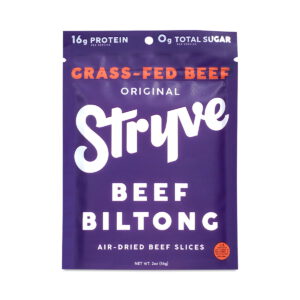- Healthy meal planning strategies
- Quick cooking techniques
- Essential kitchen tools for efficiency
- Nutrient-dense ingredients for busy lifestyles
- Easy recipes for every weeknight
- Tips for maintaining a stress-free cooking environment
When it comes to grocery shopping, especially for those navigating the busy waters of a time-crunched lifestyle, it’s essential to approach the task with a plan. By being strategic about what you buy, not only do you save time, but you also support your goal of healthy eating. Here are some practical tips tailored for families, fitness enthusiasts, vegans, and anyone with a hectic schedule.
First off, before you even step into a store or open your online shopping app, create a list based on your meal plan for the week. This list should include a variety of nutritious ingredients, which brings us to the next tip. Focus on whole foods—items that are as close to their natural state as possible. Vegetables, fruits, whole grains, legumes, nuts, and seeds should dominate your cart. If you’re a vegan, look for high-protein options like lentils, chickpeas, tofu, and quinoa.
- Shop the perimeter: Most grocery stores place whole foods around the outer edges of the store, while processed items are often found in the aisles. Spend most of your time in these outer sections for the healthiest choices.
- Buy in bulk: If you have the room, purchasing grains, nuts, and dried fruits in bulk can save money and reduce waste. Items like oatmeal, brown rice, and nuts are pantry staples that support healthy eating.
- Look for local and seasonal produce: Not only is it fresher, but buying local produce often supports your community and reduces your carbon footprint. Seasonal fruits and veggies tend to have better flavor and nutritional value.
- Organic options: When possible, select organic produce, particularly for items on the EWG’s “Dirty Dozen” list, which highlights fruits and vegetables with higher pesticide residues. This is crucial for maintaining a healthy kitchen environment.
- Check expiration dates: Whether shopping online or in-person, be vigilant about checking expiration dates on packaged foods. This ensures that you are buying fresh ingredients that will last you throughout the week.
- Be mindful of product sourcing: If you are purchasing vegan products, verify that they meet your dietary ethics. Look for certifications like vegan and cruelty-free on labels.
- Be cautious with online shopping: While convenience is a plus, ensure you use reputable online grocery services. Read reviews, check for customer service options, and confirm security protocols when inputting payment information.
Consider budget-friendly options: many grocery stores offer loyalty programs and weekly deals. Take advantage of these offers to keep your grocery costs manageable. Adding frozen fruits and vegetables to your list is a great way to enjoy healthy snacks and sides while cutting down costs and prep time.
Always remember: the key to stress-free cooking lies in being organized and informed. Your grocery shopping habits can significantly influence your cooking experience, making it efficient and enjoyable. Embrace the planning stage, and you will empower yourself for a week of healthy meals!
Quick cooking techniques
To efficiently prepare meals without sacrificing nutrition, adopting quick cooking techniques can dramatically streamline your kitchen efforts. These methods are designed to speed up cooking times and simplify processes, allowing busy individuals to create delicious, healthy meals even on tight schedules.
One of the most effective techniques is the use of one-pot cooking. This method not only reduces the number of dishes to wash but also allows for the incorporation of multiple ingredients, ensuring that meals are nutritionally balanced. By using large pots or skillets, you can layer flavors, combining proteins, grains, and vegetables all at once. For instance, preparing a stir-fry or a hearty stew can yield a complete, satisfying meal in about 30 minutes.
Another efficient cooking method is batch cooking. By dedicating a day, such as Sunday, to prepare several meals at once, you can save time throughout the week. Cooking larger quantities of staples, like quinoa or brown rice, and storing them in the refrigerator ensures quick access to base ingredients when assembling meals later in the week. This technique allows for variety, as you can pair the base with different proteins and vegetables each day.
Additionally, embracing the use of a slow cooker can be a game changer. Simply toss in your prepped ingredients in the morning, set it, and let it cook throughout the day. This hands-off approach offers the luxury of coming home to a hot meal ready to serve. Slow cookers can accommodate soups, stews, roasts, and even vegetarian chili, promoting stress-free cooking for those with demanding schedules.
Microwave technology has also evolved, allowing for quick reheating and cooking of various ingredients. Steaming vegetables in the microwave, for example, preserves their nutrients while saving time. Utilizing microwave-safe dishes, you can heat leftovers or quickly cook single servings of grains or proteins.
Finally, mastering the art of quick knife skills can make a significant difference. Dicing vegetables, filleting fish, or cutting meat into smaller pieces can reduce cooking time. Consider investing in a good-quality chef’s knife that feels comfortable in your hand, and practice your chopping techniques to enhance speed and efficiency.
| Cooking Technique | Benefits | Example Dishes |
|---|---|---|
| One-Pot Cooking | Saves time on cleanup, layers flavors | Stir-fry, Stews |
| Batch Cooking | Prepares multiple meals in advance, reduces daily effort | Grains, Curries |
| Slow Cooking | Hands-off method, tenderizes meats | Soups, Stews, Chili |
| Microwave Cooking | Quick reheating and cooking, saves time | Steamed Veggies, Instant Oatmeal |
| Quick Knife Skills | Reduces prep time, enhances efficiency | Salads, Stir-fry |
By implementing these quick cooking techniques, time-crunched individuals can enjoy the benefits of healthy eating without the stress that often accompanies meal preparation. Each method enables greater culinary flexibility, fostering an environment where cooking is both enjoyable and efficient. Embracing these strategies will not only enhance your cooking skill set but also allow for a more relaxed approach to healthy meal preparation.
Essential kitchen tools for efficiency

When venturing into the world of grocery shopping, whether in-store or online, it’s essential to be armed with the right knowledge and strategies. This advice will help you navigate the aisles or your computer screen with ease, ensuring that your choices contribute to healthy eating while accommodating a time-crunched lifestyle.
Start by categorizing your shopping list to make the experience smoother:
- Fresh Produce: Focus on vibrant, seasonal fruits and vegetables. Think leafy greens like kale and spinach, colorful bell peppers, and nutrient-rich sweet potatoes. For a quick pick-me-up, grab bananas and apples for on-the-go snacks.
- Proteins: If you follow a vegan diet, stock up on plant-based proteins such as black beans, lentils, and chickpeas. Tofu or tempeh can serve as meaty alternatives for a satisfying main dish. Additionally, consider edamame and walnuts for convenient snack options.
- Whole Grains: Quinoa, brown rice, and rolled oats are fantastic staples to include in your pantry. They are not only filling but also rich in fiber and nutrients, perfect for maintaining energy levels.
- Dairy Alternatives: If you’re vegan, explore almond, oat, or soy milk as dairy substitutes. Look for yogurts made from coconut or cashews to add diversity and flavor to your meals.
- Snacks: Choose health-conscious options like raw nuts, popcorn, and dried fruit. These snacks are great for busy days and help curb hunger between meals.
- Spices and Condiments: Elevate your dishes with an array of spices such as cumin, turmeric, and smoked paprika. Incorporate healthy oils like olive or avocado oil for cooking and dressings.
Consider local markets for fresh, high-quality groceries. Visiting farmers’ markets not only supports local agriculture but also provides access to foods at peak freshness and flavor, which can significantly enhance your meals.
If you prefer online shopping, make sure to utilize reputable services with positive reviews. Always read the product descriptions thoroughly, paying attention to details such as allergen information and ingredient sources. For fresh produce, it may be beneficial to choose retailers that allow you to select your items, ensuring that you receive the freshest options. Additionally, be on guard for those hidden fees that can inflate your grocery bill during checkout—compare prices and watch out for delivery charges!
Be mindful of organic foods for those items that tend to carry higher pesticide residues. Popular examples include strawberries, spinach, and the aforementioned “Dirty Dozen.” Investing in organic options for these specific fruits and vegetables is a wise choice for your health and well-being.
Lastly, don’t overlook frozen fruits and vegetables as they are often picked and frozen at peak ripeness, locking in their nutritional value. They can be a tremendous asset for quick meals, adding convenience without sacrificing health. Use frozen spinach in smoothies or frozen mixed vegetables in stir-fries for a fast nutrient boost!
By shopping wisely, you enhance your ability to streamline meal preparation and maintain stress-free cooking, ensuring your busy schedule doesn’t compromise your nutrition. With a bit of planning and awareness, grocery shopping can be a quick, enjoyable experience that supports your health goals.
Nutrient-dense ingredients for busy lifestyles
Choosing nutrient-dense ingredients is a foundational aspect of maintaining a healthy diet, especially for those leading busy lives. When time is limited, the quality of what we eat becomes even more critical. Focusing on ingredients that are packed with nutrients can provide the energy and vitality needed to keep up with a hectic schedule while also supporting overall health.
Incorporating various vegetables into daily meals is an excellent way to enhance nutrient intake without spending hours in the kitchen. Dark, leafy greens like spinach, kale, and Swiss chard are not only versatile but are also loaded with vitamins A, C, and K, as well as fiber and antioxidants. These greens can be easily added to smoothies, salads, or sautéed as a side dish, allowing for quick preparation. Root vegetables such as sweet potatoes and carrots are another great option, providing carbohydrates and essential nutrients that keep you full and satisfied.
Fruits are equally important and can serve as convenient snacks or meal additions. Berries, in particular, are nutrient powerhouses; they’re low in calories but high in vitamins and antioxidants. They can be tossed into oatmeal or yogurt, mixed into smoothies, or enjoyed on their own for a quick energy boost. Bananas, apples, and oranges also provide great options for on-the-go snacking, ensuring you have access to naturally sweet, satisfying foods even on the busiest days.
Whole grains should also find a place in your pantry. Items like quinoa, brown rice, and barley are not only rich in fiber but also provide essential amino acids and minerals. They hold up well in meals throughout the week, whether in grain bowls, salads, or as a base for stir-fried dishes. For a quick and nutritious breakfast, consider overnight oats made with rolled oats and topped with fruits and nuts, which can be prepared in advance and requires minimal morning effort.
Nuts and seeds are excellent sources of healthy fats, protein, and other nutrients, making them a desirable addition to your diet. Almonds, walnuts, chia seeds, and flaxseeds can be used to enhance oatmeal, yogurt, or salads, providing crunch and an energy boost without much prep time. Their portability also makes them ideal for snacking throughout the day.
Legumes, such as lentils, chickpeas, and black beans, are not only affordable but are also incredible sources of plant-based protein and fiber. They can easily be integrated into soups, stews, and salads or turned into spreads like hummus. Canned versions are particularly convenient, requiring just a rinse before incorporating them into your meals.
As you aim for stress-free cooking, keep in mind the importance of balance. Combining these nutrient-dense ingredients ensures that each meal is satisfying and nourishing, thus eliminating the need for extra snacking or unhealthy choices.
“Eating well is a form of self-respect.” – Unknown
By prioritizing these ingredients during meal prep and grocery shopping, you create a solid foundation for healthy eating without the added stress of lengthy cooking times. These nutrient-rich options not only keep you energized but also streamline the cooking process, allowing you to enjoy delicious meals even when time is tight.
Easy recipes for every weeknight
 Easy recipes should embrace simplicity without compromising flavor or nutritional value. For busy weeknights, creating meals that require minimal prep and cook time but still deliver on health and satisfaction is essential. Here are some versatile recipes that fit seamlessly into a time-crunched lifestyle while ensuring healthy eating is achievable.
Easy recipes should embrace simplicity without compromising flavor or nutritional value. For busy weeknights, creating meals that require minimal prep and cook time but still deliver on health and satisfaction is essential. Here are some versatile recipes that fit seamlessly into a time-crunched lifestyle while ensuring healthy eating is achievable.
Consider a one-skillet Mediterranean quinoa bowl. Start by cooking quinoa according to package instructions, then in the same skillet, sauté diced onions and bell peppers in olive oil until tender. Add canned chickpeas, minced garlic, and cherry tomatoes, cooking until the tomatoes begin to burst. Finally, mix in cooked quinoa, chopped fresh parsley, and a squeeze of lemon juice for a vibrant, nourishing meal ready in about 30 minutes.
Another fantastic option is a stir-fried vegetable and tofu dish. Quickly cube firm tofu and crisp it in a pan until golden. Remove the tofu and add a mix of your favorite vegetables—think broccoli, snap peas, and bell peppers. Stir-fry them with ginger and garlic for flavor, then reintroduce the tofu along with soy sauce or teriyaki sauce. Serve this over brown rice or whole grain noodles for a satisfying and nutrient-dense dinner.
If you’re looking for something lighter, a chickpea salad is the perfect choice. Combine canned chickpeas, diced cucumber, cherry tomatoes, red onion, and a handful of arugula or spinach. Drizzle with olive oil and balsamic vinegar, then toss with salt, pepper, and herbs of your choice like dill or basil. This dish is not only a breeze to prepare but also refreshing and filling.
For a heartwarming option, try a slow cooker soup. Add vegetable broth, diced carrots, celery, and onion to your slow cooker along with lentils and spices like thyme and bay leaves. Set it on low and let it simmer throughout the day, coming home to a warm, hearty meal that offers comfort on busy nights.
Don’t overlook the power of sheet pan dinners. Arrange protein sources like salmon or chicken breast on a baking sheet alongside an assortment of seasonal vegetables such as Brussels sprouts, sweet potatoes, and asparagus. Season with herbs and spices, then roast until everything is cooked through. This technique allows for a complete meal with minimal dishes to clean afterward.
Achieving stress-free cooking is about having go-to recipes that fit within your busy life. As you build a repertoire of easy, healthy recipes, you’ll find that maintaining health through cooking becomes second nature, making each weeknight dinner something you look forward to rather than a chore.
- What are some quick meal options for busy weeknights?
- One-pot meals, sheet pan dinners, and stir-fries are excellent choices that can be prepared quickly while still being nutritious. Consider using ready-to-cook proteins and pre-chopped vegetables to save even more time.
- How can I adapt recipes for a plant-based diet?
- Many traditional recipes can easily be modified by substituting animal proteins with plant-based options like tofu, tempeh, or legumes. Additionally, incorporating more vegetables can enhance flavor and nutrition.
- Are there healthy options for kids?
- Absolutely! Recipes like whole-grain veggie pizzas, homemade wraps, and smoothie bowls allow for healthy ingredients while being fun and appealing to kids. Involving them in the cooking process can make them more likely to try new foods.
- What can I keep in my pantry for easy meal prep?
- Stock your pantry with whole grains like quinoa and brown rice, canned beans, canned tomatoes, and a variety of spices. Having these staples on hand makes it easier to whip up quick and healthy meals at any time.
- How can I streamline my grocery shopping?
- Create a weekly meal plan and shopping list categorized by food type. Shopping in the perimeter of the store usually yields the healthiest options, and buying in bulk can save time and money.
- How often should I meal prep for the week?
- Meal prepping once a week, such as on Sundays, can save a significant amount of time and effort during busy weekdays. You can prepare ingredients in advance or cook full meals to be stored in the fridge or freezer.
- What are some tips for maintaining a stress-free cooking environment?
- Keep your kitchen organized by regularly decluttering and ensuring all tools and ingredients are easily accessible. Play your favorite music or podcast while you cook to enjoy the process and reduce stress.
Tips for maintaining a stress-free cooking environment
When it comes to maintaining a stress-free cooking environment, creating a well-organized and efficient grocery shopping routine is crucial. Start your shopping experience by crafting a detailed grocery list based on your meal plan for the week. This not only saves time but helps you stick to your healthy eating goals.
One effective strategy is to categorize your shopping list. Organizing by sections of the grocery store can streamline your shopping process, minimizing aimless wandering:
- Fruits and Vegetables: Opt for fresh, seasonal produce to maximize flavor and nutrition. Aim for a colorful variety, including leafy greens like kale, cruciferous veggies like broccoli, and fruits such as berries and citrus. If you’re pressed for time, consider pre-cut options for fast meal prep.
- Proteins: For vegans, include plant-based proteins like lentils, chickpeas, and tempeh. They are nutritious and can be quickly cooked or tossed into salads. For non-vegans, lean meats and fish offer great sources of protein; just ensure they are sourced sustainably.
- Grains: Stock whole grains like brown rice, quinoa, and whole wheat pasta. These can serve as a base for various meals and are often quick to cook.
- Snacks: Choose healthy snacks such as raw nuts, hummus, and veggie sticks. They are great for maintaining energy between meals without adding stress to your schedule.
- Pantry Staples: Keep a well-stocked pantry with essentials like canned beans, tomatoes, spices, and healthy oils. These ingredients allow you to whip up meals quickly without extensive preparation.
When shopping locally, visiting farmers’ markets can enhance your experience. You’ll find fresh, often organic produce that supports both your health and local farmers. Try to buy what’s in season to enjoy the best flavors and nutritional density.
If online grocery shopping is more convenient for your busy lifestyle, choose reputable services. Before placing an order, check reviews and security measures to protect your personal information. Select retailers that allow you to customize your order, ensuring you receive the freshest produce.
Safety is also paramount when it comes to food. Always check expiration dates on packaged items and label information, especially for common allergens if your household has specific dietary needs. For packaged foods, look out for certifications that indicate adherence to health standards.
For those working with a tight budget, buy in bulk where possible. Items like grains and legumes can usually be found at a lower cost and stored for longer periods, making a bulk purchase both economical and practical. Furthermore, keep an eye on store promotions and discounts, which can help you save significantly on healthy options.
By adopting these grocery shopping tips, you can create a stress-free cooking environment that not only supports your health goals but also fits seamlessly into your time-crunched life. With a little planning and awareness, your kitchen can become a sanctuary of nourishment and enjoyment rather than a source of stress.
New Customers Offer!
Free Gift for the new customer
$24 Value, When You Subscrib Visit Thrive Market












